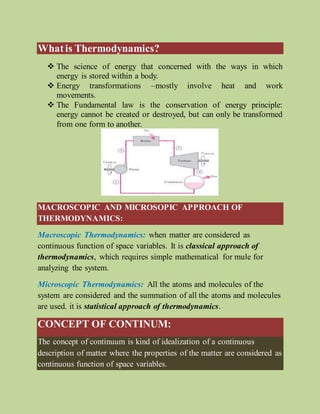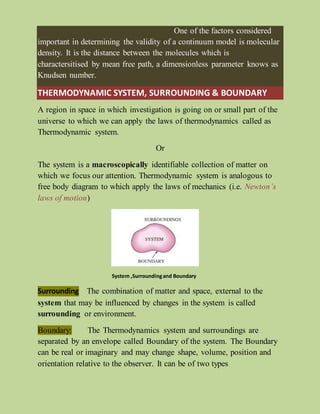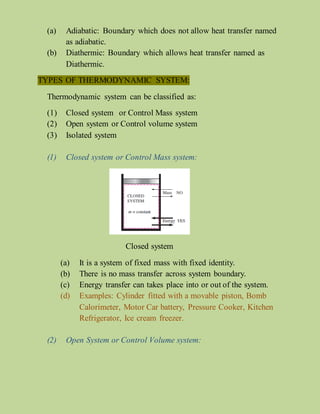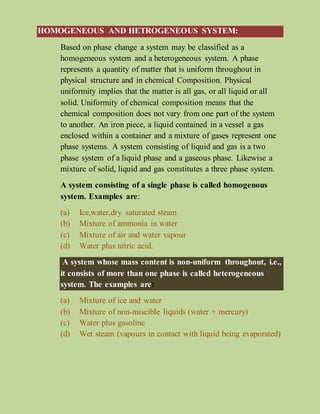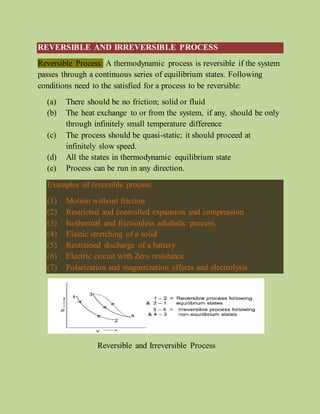Thermodynamics is the study of energy transformations, focusing on how energy is stored, transferred, and transformed, based on the principle of conservation of energy. It classifies systems into closed, open, and isolated categories, as well as homogeneous and heterogeneous systems, emphasizing properties like intensive and extensive characteristics. The document also explains key concepts such as thermodynamic equilibrium, processes, and differences between reversible and irreversible processes.
